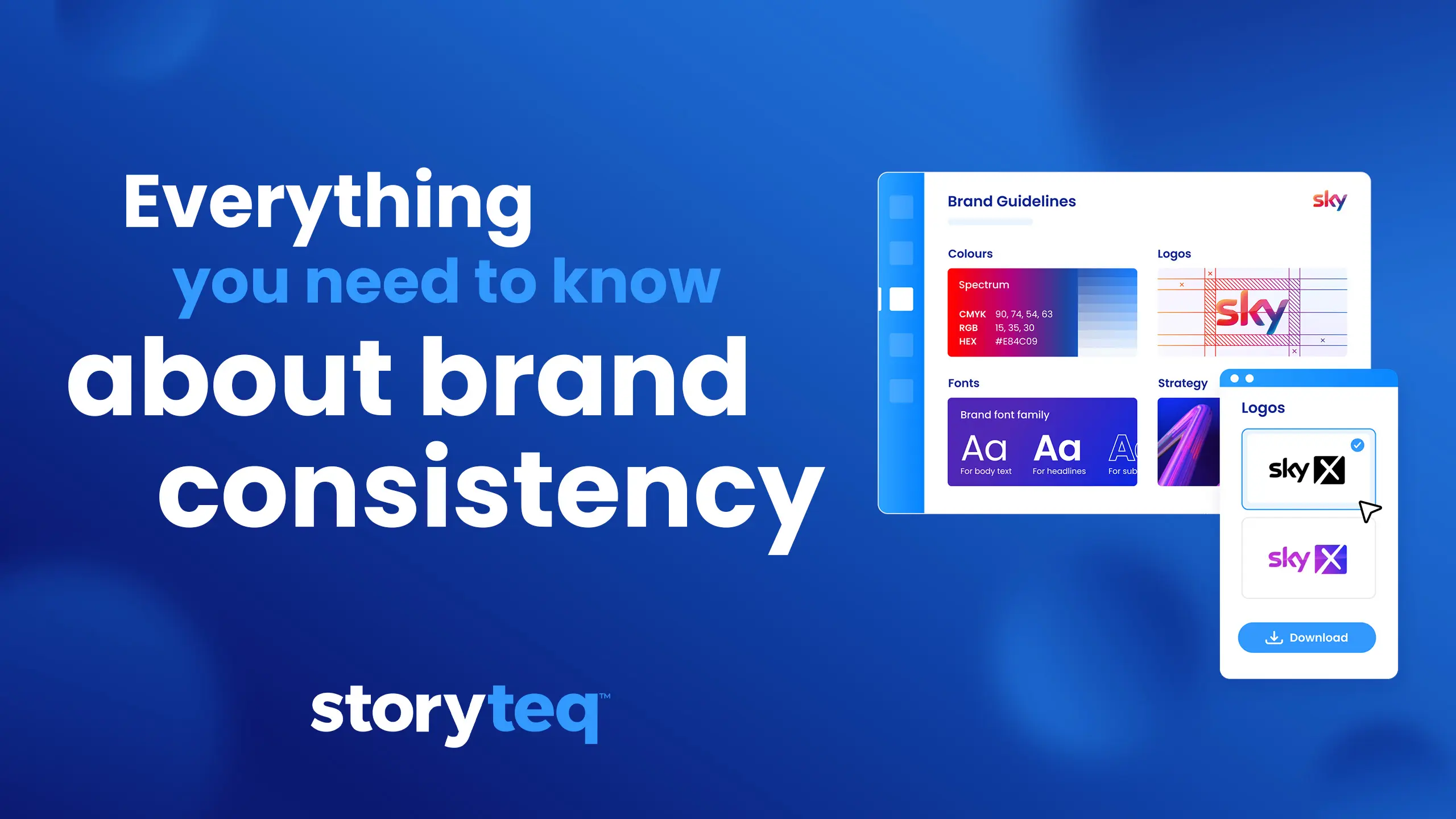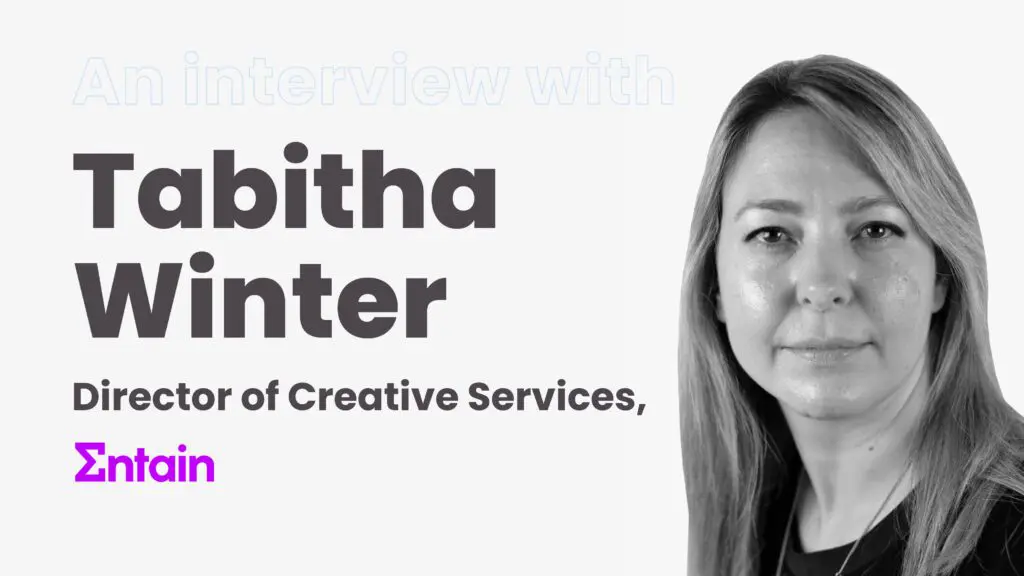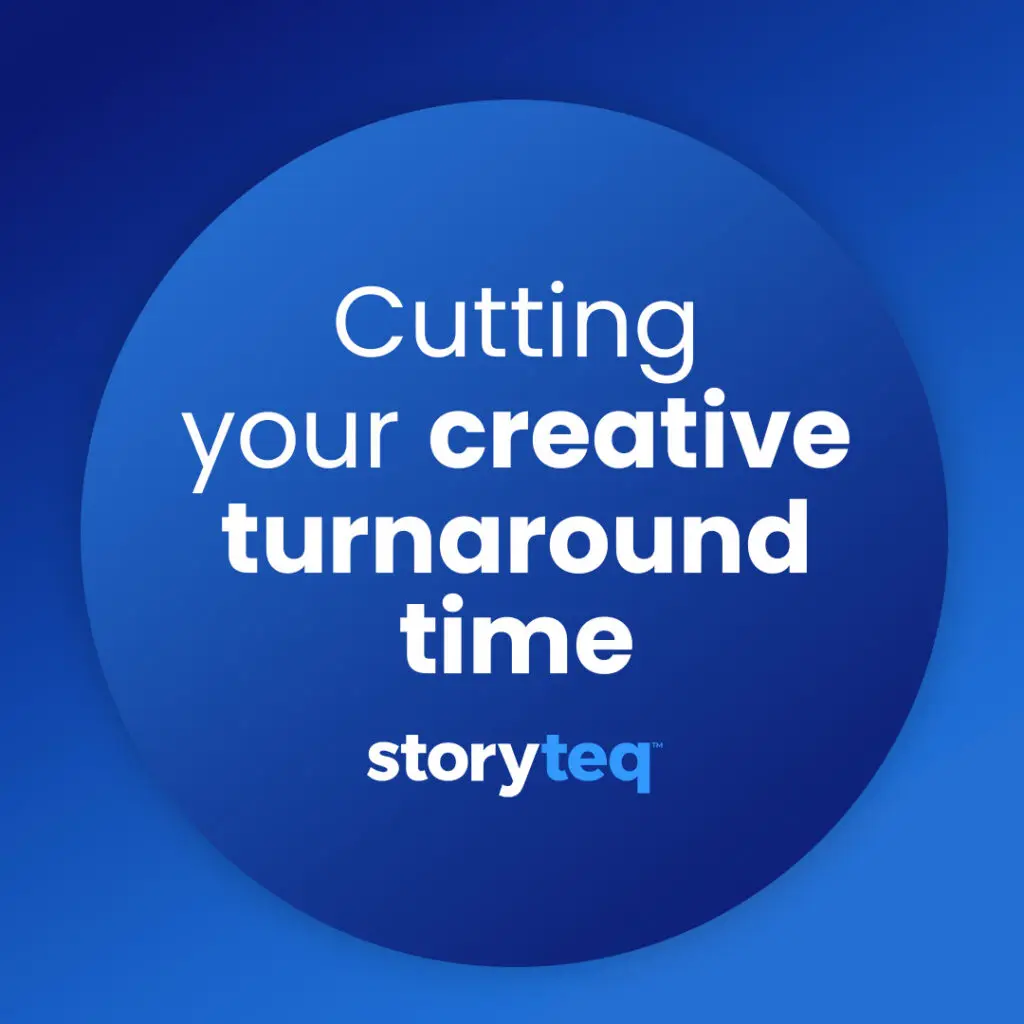Having a consistent brand is one of the most crucial elements of successful marketing. However, many companies choose to rebrand frequently instead – to start fresh, try out something new, or respond to market trends. In this blog, we’ll explain why consistent branding is so important, delve into common challenges, and explore how to achieve such cohesion. We’ll conclude with an example of successful brand consistency, and the role that Creative Automation plays in it. But first, let’s discuss the importance of brand stability.
Why is consistent branding important?
Consistency in branding elements, such as logos, colours, and fonts, is crucial in building and sustaining brand recognition. Because when consumers repeatedly encounter certain visual cues, they are more likely to remember and associate these elements with a specific brand. This repetition establishes a strong visual identity, making it easier for consumers to identify and choose a brand over others in the crowded market. Furthermore, consumers are more likely to develop positive feelings for a brand due to consistency.
Building affection through familiarity
Likewise, constant exposure to a brand’s consistent visuals leads to increased likability. As consumers encounter a visual cue consistently, they are more prone to developing positive feelings and trust toward them. This is called the mere exposure effect. In practical terms this means that frequent and significant changes to a brand’s visual elements can erode the positive effects of familiarity and likability over time. Therefore, maintaining consistency not only ensures brand recognition but also contributes to a more favourable consumer perception.
The danger of brand delusion
Brand consistency isn’t just about recognition and affection; it’s also a defence against brand delusion. Consistency builds trust and reliability. Drastic changes can disconnect you from your carefully-drafted established identity, confusing consumers and eroding trust. Striking a balance between adaptation and a consistent core is key to warding off brand delusion and preserving the trust consumers place in your brand. Finally, brand consistency is also important for compliancy reasons.
Ensuring compliance in each local market
At last, consistent branding isn’t just an external affair; it’s also a powerful tool for internal compliance. This is especially true for industries like gambling, alcohol, banking, or sugar, that are subject to stringent regulations. These sectors often contend with rules, such as age restrictions or financial reservations, that dictate how specific visuals must be presented per region. Maintaining brand consistency ensures that each local marketing department adheres to these regulations with precision. It serves as a safeguard, minimising the risk of unintentional violations.
In conclusion, frequent rebranding might seem tempting in today’s fast-paced market, but it risks diluting your brand identity. Consistency, on the other hand, not only increases recognition and likability but also ensures compliance with brand guidelines and local regulations worldwide. Next, we’ll talk about trends and common challenges with maintaining a consistent brand.
Common challenges with brand cohesion
In the section above we explained why consistent branding is of crucial important in marketing. But that might sound easier than it is in practice. Large organisations often have multiple departments, teams, or agencies working on different aspects of marketing. Coordinating these different entities to adhere to one consistent brand identity can be complex.
On top of that, the amount of assets that are needed nowadays and the arrival of generative AI form an extra challenge for Marketing Managers.
More assets needed nowadays
In today’s digital landscape, companies require a legion of assets to engage with their audience across various channels – social media, websites, emails, apps and more. Each platform has its own set of rules, distinct formats, quality standards and approved elements. Imagine the struggle for marketers trying to ensure that every image and video aligns with the brand and adheres to local preferences and regulations. Likewise, technological advancements make brand consistency more complex.
AI is a nightmare for consistency reasons
Artificial Intelligence (AI) is a highly beneficial development, significantly boosting productivity of creatives with up to 25%. However, this productivity comes at a cost. Generative AI hasn’t reached the point where it fully understands brand guidelines yet. Moreover, as anyone can use AI to create content, there’s a risk that unqualified or untrained employees start creating assets without a thorough understanding of the brand rules or local complexities. It’s why AI is a double-edged sword for global marketing managers.
Do these challenges sound familiar? Fear not. In the next section we’ll explain how you can use Creative Automation and template thinking to overcome the complexities above.
How to ensure brand consistency?
Being the global marketing team, it would take an entire army of creatives to properly place and check each logo, colour palette, design element or regulatory requirement for each creative format, variation and language. Instead, it would make sense to rely on technology, in the form of Creative Automation and dynamic template creation.
What is Creative Automation?
Creative Automation revolutionises how marketers and creatives can approach their strategies. It streamlines various manual aspects of marketing, from content creation to distribution. At its core, Creative Automation leverages data-driven insights and smart technologies to enable marketers to create, customise, and deploy marketing materials rapidly and effectively.
Creative Automation, for example, helps marketers to reduce their creative turnaround time, improve their Return-On-Ad-Spend, and ease up their content localisation. But it also allows for dynamic template creation, by which it ensures brand consistency.
What is template thinking?
Dynamic template-thinking is a creative automation strategy that is focused on generating adaptable assets that integrate with a template, allowing for easy scalability and iteration. This method involves incorporating dynamic elements, for example text variations, image placeholders or colour customisations. The goal is to produce multiple versions of templates that allow for creative customisation, while always remaining on-brand.
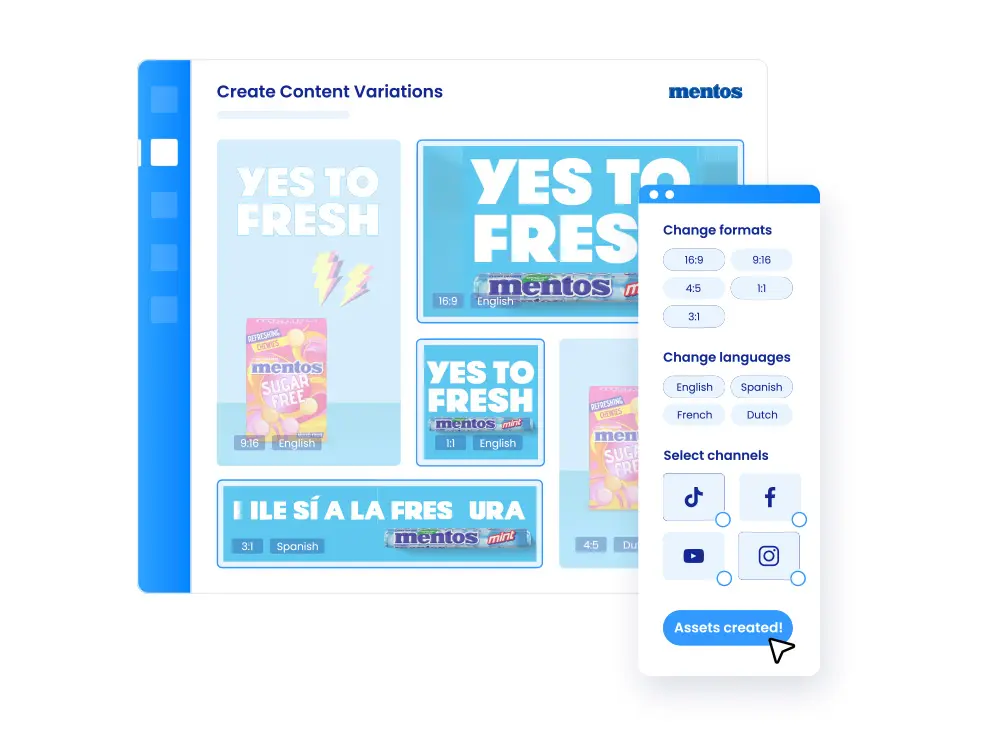
Why creative templates?
- Easily adapt content for different regions, demographics or platforms
- Reduce manual efforts
- Save time for creative work
- Align all creative work with brand guidelines
- Ensure all creative work complies with local regulations
How to make a creative template?
In order to create your own creative templates, you’ll first need to choose a software. Then, you can initiate the following 6-step process:
- Identify Key Elements: Determine the essential elements of your design, such as text, images, and branding components.
- Define Variations: Outline the aspects that may change across different versions, like text content, images, or colour schemes.
- Utilise Variables: Implement variables for the variable elements identified in step 2. This could include dynamic text fields, image placeholders, and the like.
- Incorporate Conditional Logic: Integrate conditional statements to control when and how certain elements appear or change based on predefined criteria.
- Ensure Responsiveness: Design your template to be responsive, adapting seamlessly to different screen sizes and formats.
- Test Extensively: Conduct thorough testing to ensure that the dynamic elements work as intended and that the template maintains consistency.
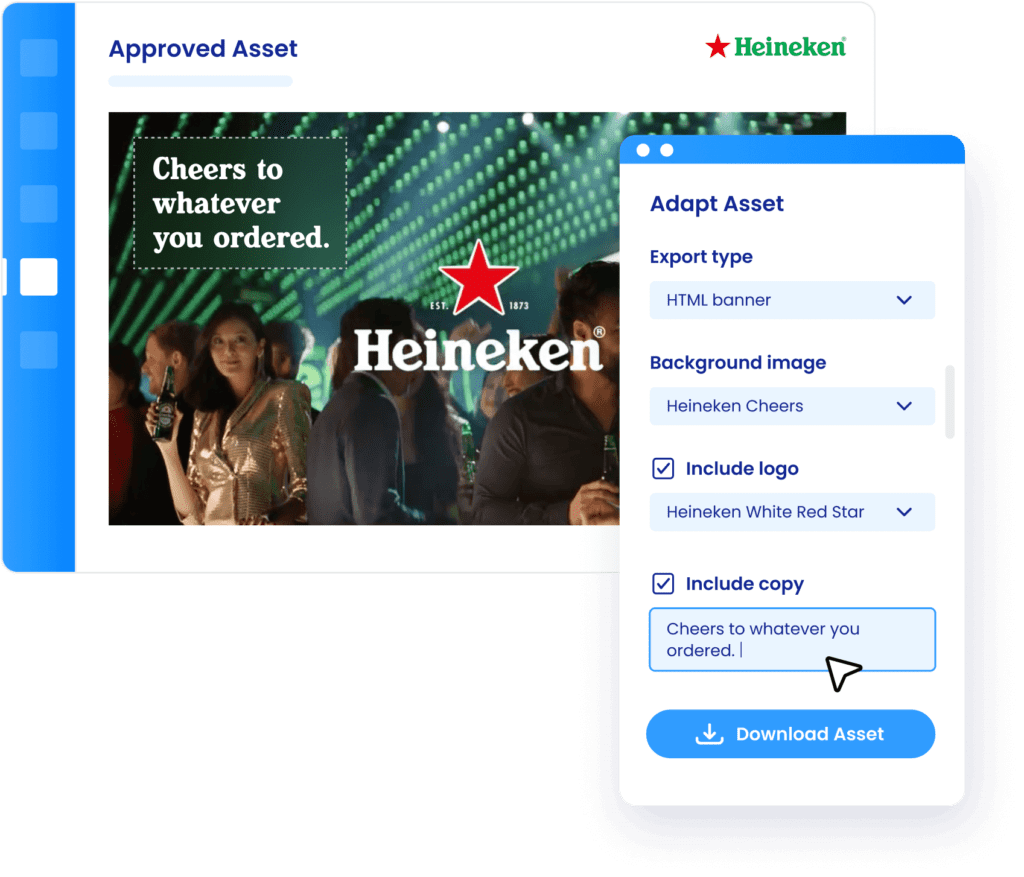
In summary, Creative Automation proves to be a valuable tool for liberating your creative team from the burdens of manual tasks, allowing them to focus on genuine creative strategy. To get ahead, explore creative templating software, initiating the process by identifying recurring patterns and elements in your existing visuals. This proactive approach sets the stage for a more efficient and streamlined creative workflow.
Example of successful brand consistency
Showcasing the effectiveness of Creative Automation in ensuring brand consistency is Perfetti Van Melle, a renowned confectionery and chewing gum giant housing popular brands like Mentos. With an expansive global presence encompassing over 150 markets, maintaining a cohesive brand identity within the decentralised structure posed a significant challenge.
Transformative Solution: Dynamic Templates
The answer, dynamic templates provided by Creative Automation tool Storyteq, revolutionised their approach. Operating from a centralised master template empowered Perfetti Van Melle to swiftly generate diverse content variations, a stark departure from the prolonged timelines associated with their previous method, which could take weeks. This strategic shift translated into an impressive 178 days saved in the production process.
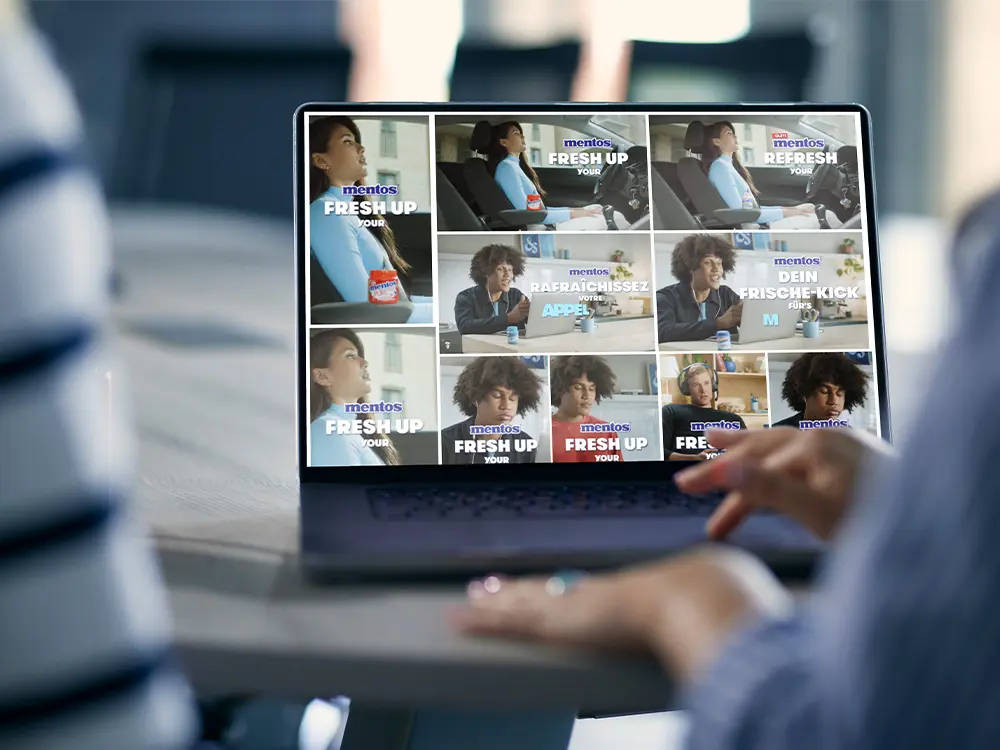
This example stands as a testament to the power of brand consistency and local flexibility in navigating the complex landscape of the FMCG industry.
Conclusion
In the world of marketing, keeping your brand consistent is like having a secret weapon. It’s not just about being recognised; it’s about making people like and trust your brand. But it’s not easy. There are challenges, like coordinating different teams, creating assets for more and more channels and formats, and dealing with new technological developments, like generative AI.
That’s where Creative Automation comes in. It uses dynamic templates that eliminate manual work and allow for faster content creation that is always guaranteed to be 100% on brand. Look at Perfetti Van Melle – they saved 178 days so far with the help of dynamic templates.
So, in a nutshell, Creative Automation is like a guide, helping brands be super efficient and keep their look and feel the same all around the world. It’s not just a technology; it’s the key to success in modern marketing.
Want to know more?
Check out how the FMCG, retail or entertainment industries work with Creative Automation. Or follow us on LinkedIn for the latest news, trends and tips!
Frequently asked questions
How do strategies for implementing Creative Automation and maintaining brand consistency adapt as companies grow or expand into new markets?
As companies grow or enter new markets, their strategies for implementing Creative Automation and maintaining brand consistency must be flexible and scalable. This involves adapting visual elements to resonate with local cultures while preserving the core brand identity. Leveraging technology like Creative Automation ensures that these adaptations are efficiently managed, enabling seamless integration of brand elements across diverse markets without losing the essence that customers recognize and trust.
Can Creative Automation be integrated with existing marketing technologies, and if so, how?
Creative Automation can seamlessly integrate with existing marketing technologies through APIs, enabling different systems to communicate effectively. This integration allows Creative Automation tools to work in harmony with CRM systems for personalized marketing materials, or content management systems for streamlined content publication. Successful integration hinges on choosing compatible Creative Automation solutions and ensuring technical support for the integration process, thereby enhancing efficiency and brand consistency without disrupting existing workflows.
How do global brands with established traditional marketing processes transition to Creative Automation without disrupting their current branding and marketing efforts?
Global brands transition to Creative Automation by identifying areas within their marketing processes where automation can add value, and then implementing pilot projects to integrate these tools gradually. Providing training and support is crucial to ensure a smooth transition, as is maintaining open communication about the benefits of automation. Gathering feedback allows for continuous refinement, ensuring that the adoption of Creative Automation enhances existing branding and marketing efforts without causing disruption.
